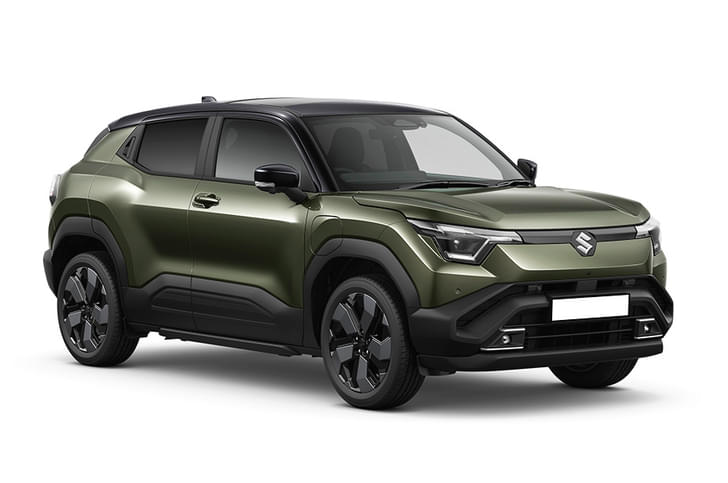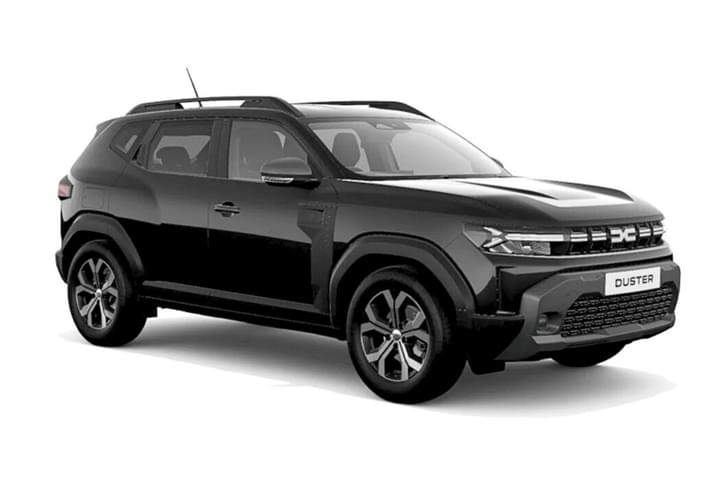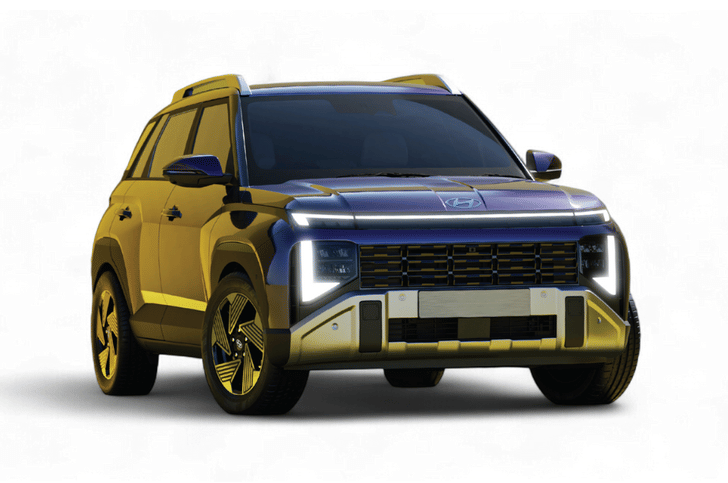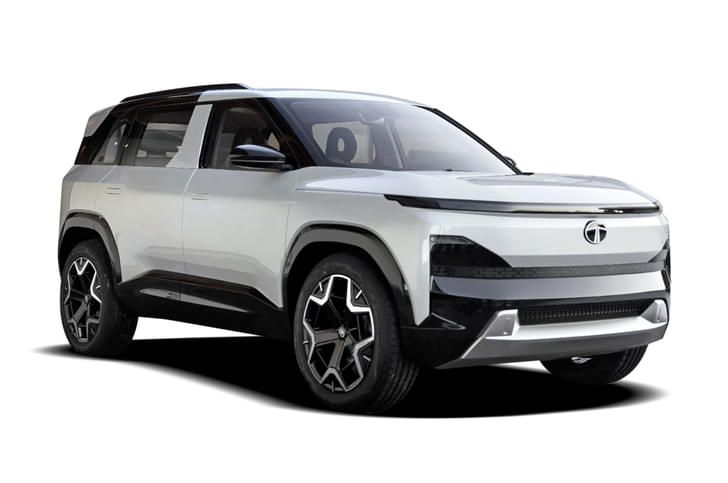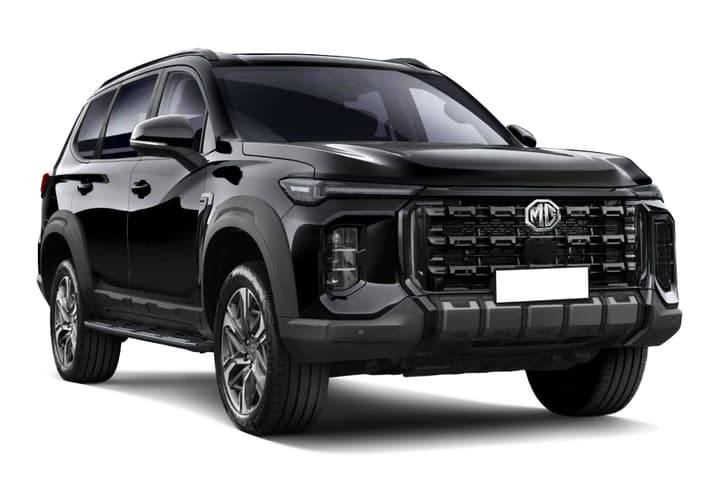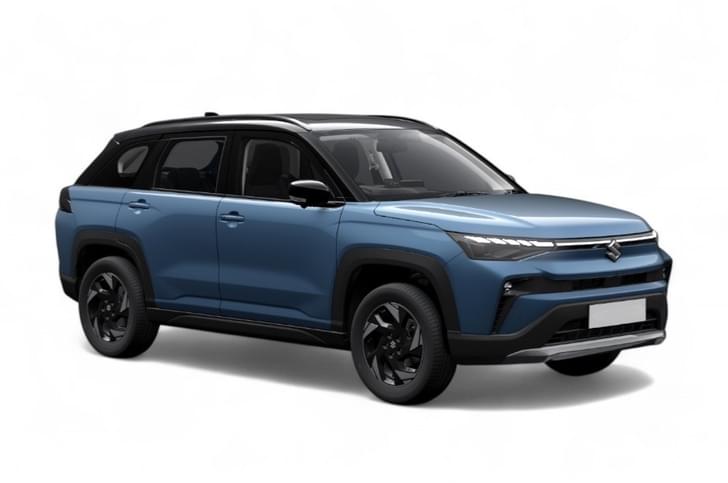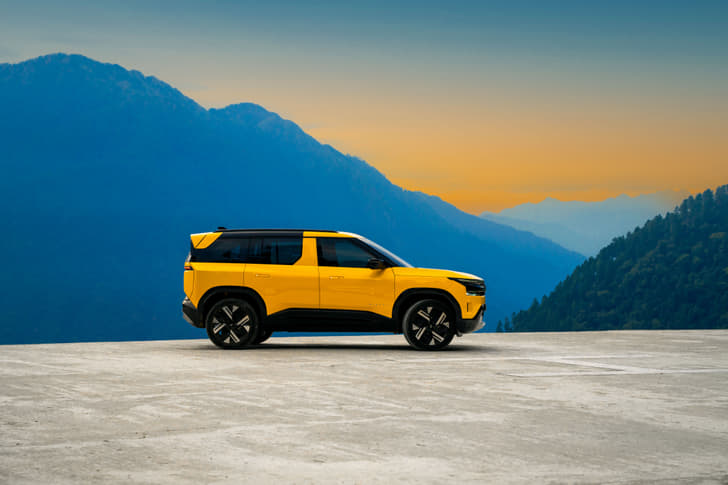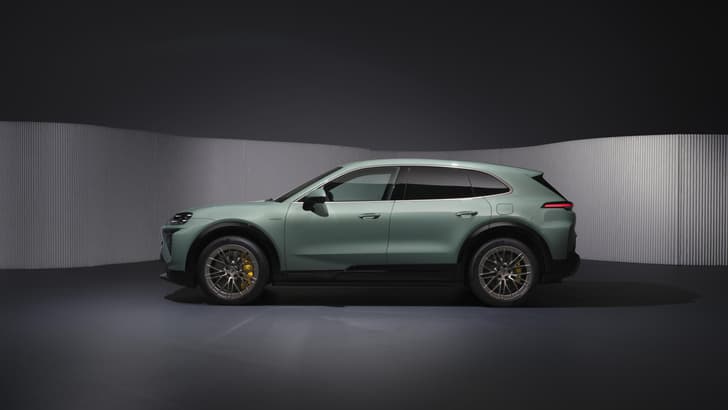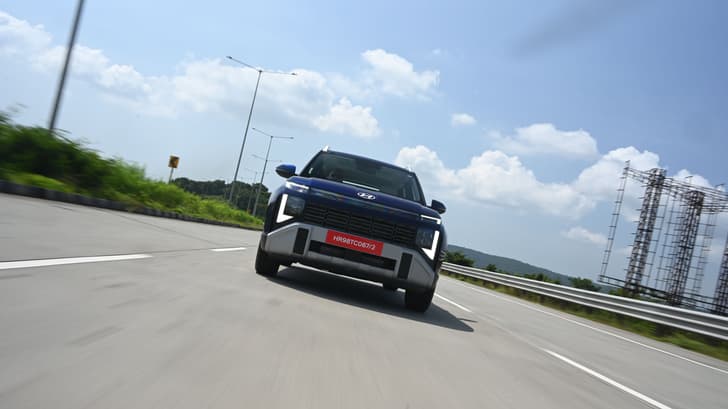What is it?
What you see here is the all-new Hyundai i20. This third-gen model (fourth if you consider the Getz an i20) was revealed abroad earlier this year and has made it to India just in time for the festive season. It’s new from the ground up and is counting on styling, equipment and power to help corner a larger chunk of the premium hatchback segment in India. Its predecessor, the Elite i20, found 6.7 lakh buyers over its six-year run, and Hyundai is confident the latest i20 will take the story forward.
2020 Hyundai i20 design
The new i20 is marginally larger (the 41mm increase in width makes it the widest car in its class) than the outgoing model but looks a lot more substantial. Styling conforms to Hyundai’s latest Sensuous Sportiness language, which means it’s edgy but also polarising.
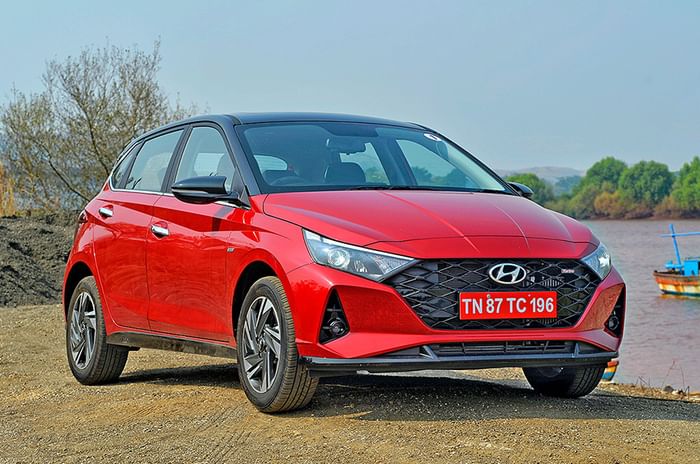
The large frameless grille is the focal point up front while the spread-out headlights and the proliferation of cuts and creases on the chin are visually interesting too. A sporty, tipped-forward stance makes the i20 easily identifiable in profile and there’s even more to distinguish it. The angular surfacing on the doors is unique, the kick up in the shoulder line is striking and even the unconventional C-pillar get your attention.
However, the detail that’s likely to define this car are the ‘Z’ shaped LED tail-lights. It’s a detail that won’t be to all tastes but distinctive it sure is. Interestingly, the black applique on the hatch under the windscreen is a detail you’ll also find on the Tata Altroz.
2020 Hyundai i20 platform
The new i20 is built on Hyundai’s new K platform. The carmaker says the new platform makes 40 percent greater use of high-strength and advanced high-strength steels that have brought in enhanced stiffness and a reduction in kerb weight. The new i20 is up to 100kg lighter than the last-gen model. Crash protection is said to have been enhanced as well, with improved energy flow on impact. Before you ask, the new i20 has not been rated by Global NCAP as yet.
2020 Hyundai i20 interior
The new i20’s interior is well thought-out and user-friendly. The low-set dashboard allows a good view out, the touchscreen and instruments are in clear sight, and frequently used buttons are also in easy reach. Toggles for the air-con controls are some of the nice bits on the centre console. Sure, some might find the horizontal slats that extend from the air-con vents to be overdone, but they do help enhance the visual width of the dashboard and feeling of space inside.
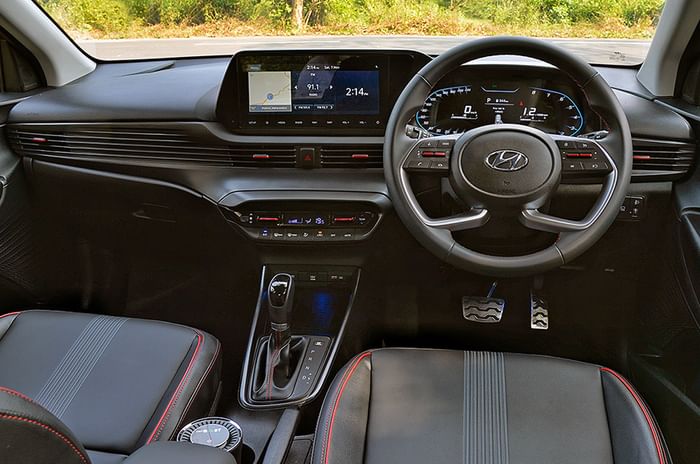
Front seat comfort is good but cushioning at the lower back is a touch soft on versions with fabric upholstery. Interestingly, leatherette upholstery is unique to Turbo versions and it does help uplift the ambience inside. Also, dual-tone body colour i20s get sporty and well-executed red detailing on the steering, AC vents and doors. Sadly, all’s not perfect inside the i20. The all-black cabin theme can look dull and there are also quite a few ordinary surfaces in what is a pricey car. The plastics on the glovebox lid and windowsill feel scratchy, and it’s also disappointing that there is no use of fabric or no soft-touch materials on the door pads.
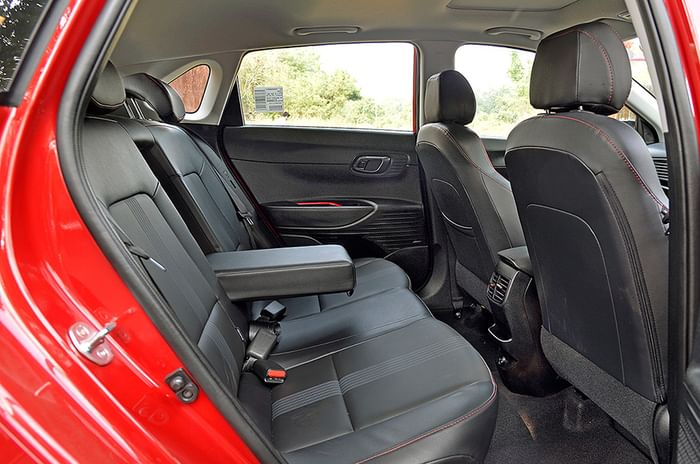
Where the new i20 feels vastly superior to the model it replaces is in rear-seat space. Wheelbase is up only 10mm (to a class-leading 2,580mm) but there is a whole lot more room at the back. Suffice to say, there’s ample kneeroom and headroom for six footers to sit in comfort, and fitting in a third passenger won’t be too much of a squeeze. The seatback is also nicely reclined and what aids comfort is the nicely positioned rear-centre armrest. Amenities at the back include air-con vents and a USB charging slot, but dedicated cupholders are missed.
Hyundai i20 features
The i20 is available in four trim levels and top-spec Asta (O) versions go the distance in terms of equipment. Safety kit includes six airbags, ABS, ESC and a segment-first tyre pressure monitoring system.
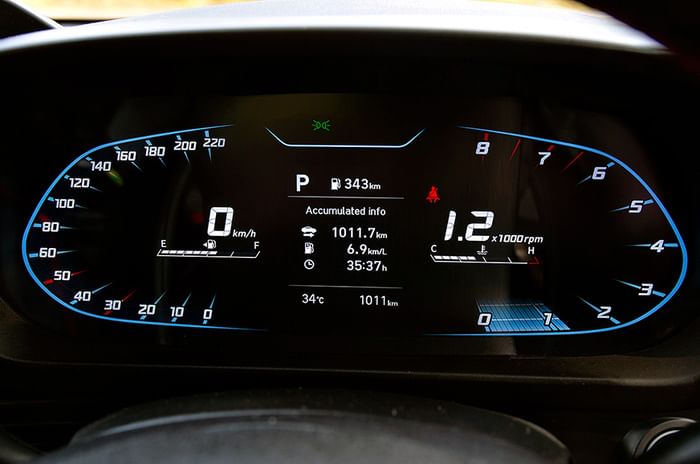
Fully-loaded i20s also boast LED projector headlights, a sunroof, an onboard air purifier, auto climate control, ambient lighting, tilt and telescopic adjust for the steering, among a long list of comfort and convenience features. The i20 also sets the benchmark with its 10.25-inch touchscreen, which is not only the largest in class but also the slickest and best equipped, packing in connected tech as well. Also part of the package is a Bose sound system with a subwoofer that enables a nice depth to the sound. A Verna-like digital instrument cluster is also included. The counter-clockwise tachometer and the bar-like readings are not the most intuitive and more often than not, your eyes will lock on to the crisp digits for engine RPM and road speed.
Hyundai i20 boot space
Another area where the new i20 improves is in luggage room. At 311 litres, the boot is still not class-leading but can hold enough for the odd airport run. Although, you will have to haul your luggage in as the loading lip is quite high. The i20 also gives the flexibility to fold the rear backrest down to free more luggage room but the seats don’t split 60:40.
Hyundai i20 engine options
The new i20 is available with three engines, each with its own gearbox option. The range starts with a 1.2-litre, four-cylinder, petrol that can be had with a 5-speed manual or a CVT (iVT as Hyundai calls it). Interestingly, the engine puts out 83hp with the manual but 88hp with the CVT. An exciting new addition to the i20 is Hyundai’s 1.0-litre turbo-petrol that puts out 120hp (making it the most powerful car in its class) and is available with an iMT or clutchless manual gearbox and a 7-speed dual-clutch auto. A diesel engine also makes a comeback to the i20 after a short absence. The engine in question is Hyundai’s latest 1.5 diesel that makes 100hp on the i20 and is on offer solely with a 6-speed manual.
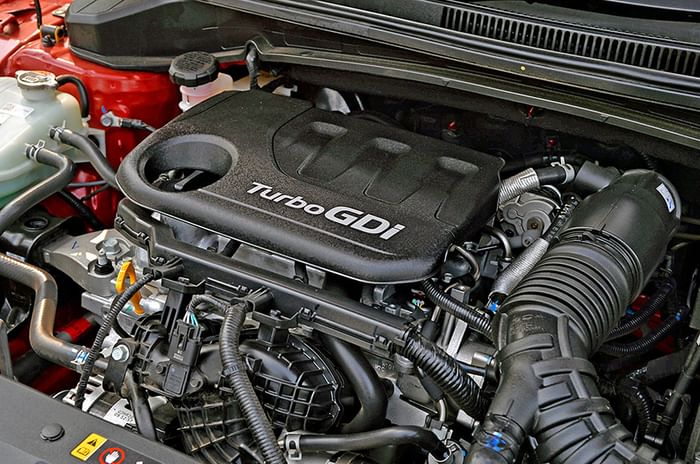
Hyundai i20 1.0 Turbo performance
We’ll start with the range-topping i20 Turbo equipped with the DCT gearbox. As is known, Hyundai's 1.0 Turbo GDI engine isn't the liveliest engine at low revs but the DCT does help here. The gearbox does a good job of masking the engine's weak bottom end and keeps the i20 in the right gear, so you won't have any problem maintaining momentum or keeping up with the flow of traffic. Part-throttle responses are good and you'll also like the low engine noise levels in town.
Open it up and you will hear that three-cylinder thrum. Fact is, there is reason to open it up. There’s a nice tug from about 2,000rpm or so, the engine pulls cleanly in the mid-range and it's really quite enjoyable. The 7-speed dual-clutch gearbox also comes into play when you drive harder but there are some points of note. For one, it’s smooth and convenient but not quite quick and snappy as you’d expect a dual-clutch unit to be. Hyundai’s system is not slow by any means but it's also not quite as a lightning quick as a VW DSG unit. Sport mode for the transmission does speed things up to an extent and the gearbox is also nice and responsive to manual shifts via the gear lever. Sadly, there are no paddleshifters.
| Hyundai i20 1.0 Turbo-DCT performance | ||
|---|---|---|
| 2020 Hyundai i20* | 2020 Hyundai Venue DCT | |
| 0-60kph | 5.83 sec | 5.30 sec |
| 0-100kph | 12.56 sec | 11.54 sec |
| 20-80kph (in kickdown) | 6.92 sec | 6.58 sec |
| 40-100kph (in kickdown) | 8.63 sec | 8.79 sec |
The i20 makes light work of overtakes but also gives its best in the mid-range. You can extend the engine to 6,300rpm or so but the thing is, the rush of power in the top end that you just expect from a car with sporty pretensions is missing here. In our preliminary tests, the i20 Turbo DCT did the 0-100kph dash in 12.56sec, which is far from Hyundai's claimed 9.9sec time. Our timings are also a second off of what we managed with the Hyundai Venue Turbo DCT, which uses the same engine and gearbox combo. The i20 Turbo DCT uses the engine-gearbox’s latest calibration that prioritises part-throttle responsiveness over all out power.
Hyundai i20 1.5 diesel performance
If it's long distances you'll be doing routinely, it's the i20 diesel with an ARAI-rated fuel economy of 25.2kpl that should be the version of interest for you. The good news is that there's more to the i20 diesel than just the promise of good economy. Hyundai's latest 1.5-litre diesel engine has found application on a whole host of Hyundai and Kia models already and it's just as likable on the new i20 as well. It’s not an outright punchy engine but what you will like this 100 horsepower version for is its flexibility. The build of speed from low RPMs is rather nice, there is a slight bump in power around 2,000rpm and that power stays with you till about 4,000rpm giving you quite a wide band to play in.
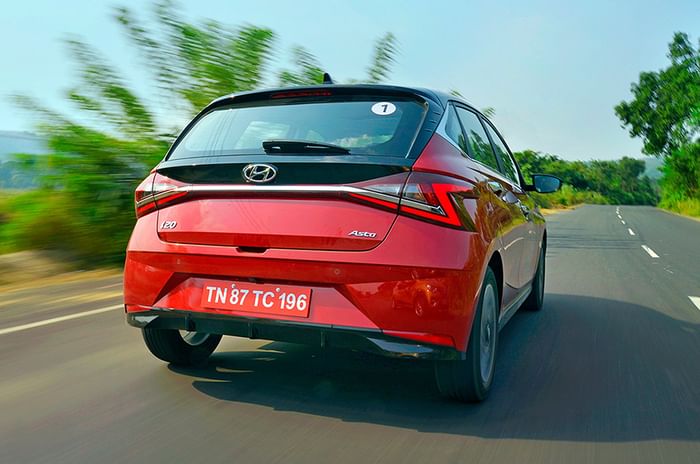
Not that you'll need to, but you can wind the engine to 4,800rpm or so. The flip side of extending the engine is a jump in noise levels and also a gravelly note from the engine bay. Kept spinning in its comfort zone, though, and the engine runs relatively quiet for a diesel. In fact, on a relaxed cruise, it's road and tire noise that you'll hear more of. The pleasant spread of power makes the i20 diesel an easy hatchback to live with, both in town and on the highway, and the standard-fit 6-speed manual gearbox only helps to this end. It's fun going through the gears and as an added plus, the clutch is also well weighted. In our preliminary performance test, the i20 diesel did the 0-100kph dash in a commendable 11.15sec.
| Hyundai i20 1.5 Diesel MT performance* | |
|---|---|
| 0-60kph | 4.55 sec |
| 0-100kph | 11.15 sec |
| 20-80kph (in third) | 10.80 sec |
| 40-100kph (in fourth) | 14.25 sec |
Hyundai i20 1.2 petrol-manual performance
1.2-litre petrol engine-powered i20s will likely bring in the bulk of sales. Performance from the engine is humdrum, as the 83hp engine doesn’t pull well from low speeds. This is partly down to the fact that peak torque only comes in at around 4,000rpm and that’s probably why you have to wait an age for the engine to start pulling strongly. So, it’s often best to shift down to a lower gear, which you do need to do quite often when you drive in stop-start traffic. The light clutch and slick gearbox help in the matter.
| Hyundai i20 1.2 Petrol-MT performance | ||
|---|---|---|
| 2020 Hyundai i20* | 2014 Hyundai i20 | |
| 0-60kph | 5.74 sec | 6.55 sec |
| 0-100kph | 14.02 sec | 15.71 sec |
| 20-80kph (in third) | 15.38 sec | 16.16 sec |
| 40-100kph (in fourth) | 21.94 sec | 22.16 sec |
Get past the meek bottom end and what becomes clear is that there’s a bit more performance on tap. While the conditions weren’t ideal, our VBox recorded a 0-100kph time of 14.02sec, making it a fair amount quicker than the outgoing car. While a lot of this has to do with the fact that it is lighter, the engine also pulls quite nicely from 4,000rpm to 6,000rpm, with a clear step up discernible around 4,500rpm.
Hyundai i20 ride and handling
The i20 takes a big step up over its predecessors in the area of dynamics. The aloof steering makes way for a smoother and nicer feel at the wheel, turn-in is neat and handling, in general, is quite tidy. And true to Hyundai tradition, it’s the diesel that is the best setup of the i20s.
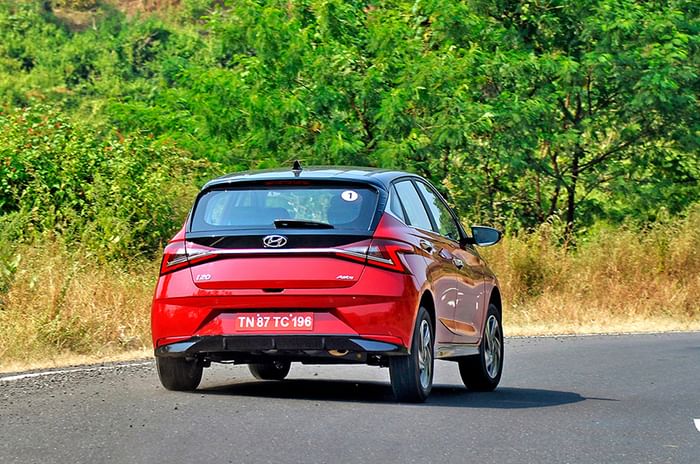
Drive hard into a corner and you’ll realize the i20 Turbo is not quite the sporty car it's being made out to be. The car tends to wash wide and while there is grip from the chassis, the tyres don't hold on gamely enough. What also takes a bit away from the experience is that the i20 feels a bit twitchy under hard braking. All said, it's a pleasant car to drive rather than an out and out exciting one.
In terms of ride comfort, the i20 rounds off the bumps well, though you will feel uneven surfaces more on the stiffer setup Turbo. On a long-distance journey, you'll appreciate the i20’s newfound big car feel. Ride quality is well judged, the suspension is nicely damped, and even up and down movements are well contained. Again, it’s the diesel that’s the most poised and feels the most settled.
Should you buy one?
i20 prices start at Rs 6.8 lakh for the 1.2 petrol manual, while the fully-loaded 1.0 Turbo DCT costs Rs 11.18 lakh. The best specced diesel costs Rs 10.6 lakh, which makes the i20 pricier than all its rivals. For its part, Hyundai has gone to town equipping the i20 with class-leading features.
Whether buyers will see the new i20 as a no-compromise premium hatchback or find their money better spent on a like-priced compact SUV will eventually determine if the latest i20 can build on the success of its predecessor, and the broad direction of the segment as a whole.
* Not to Autocar test standards

















